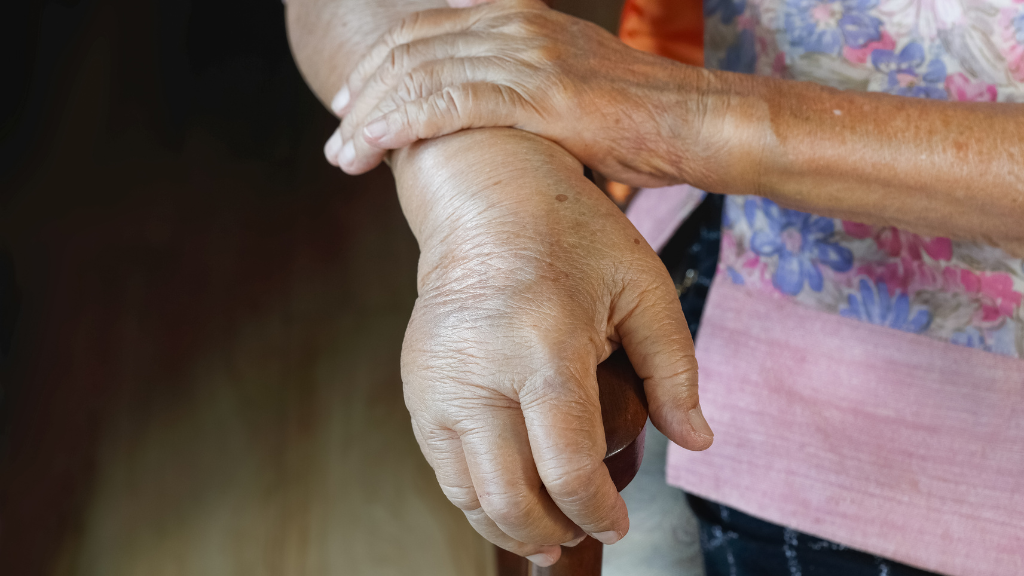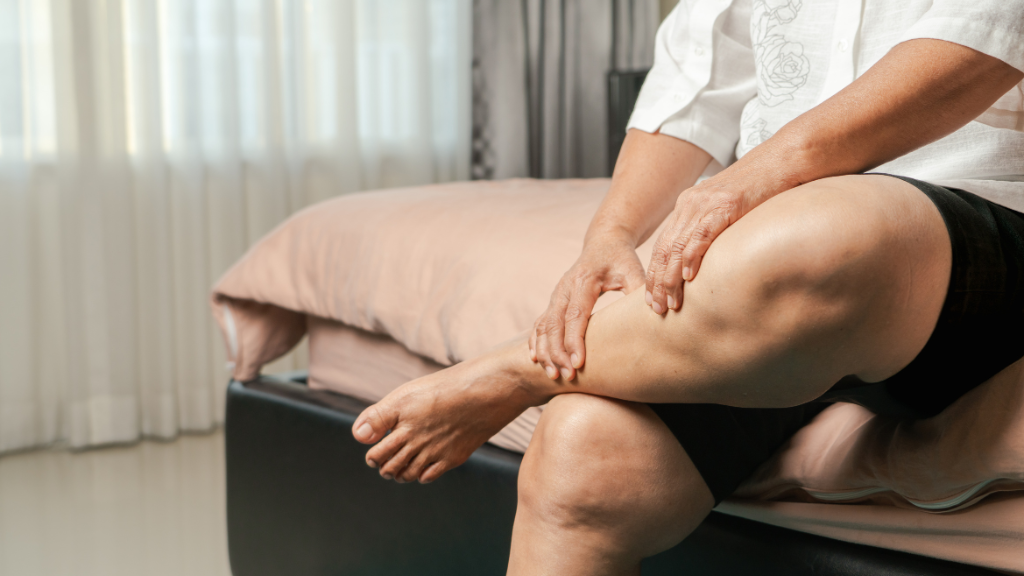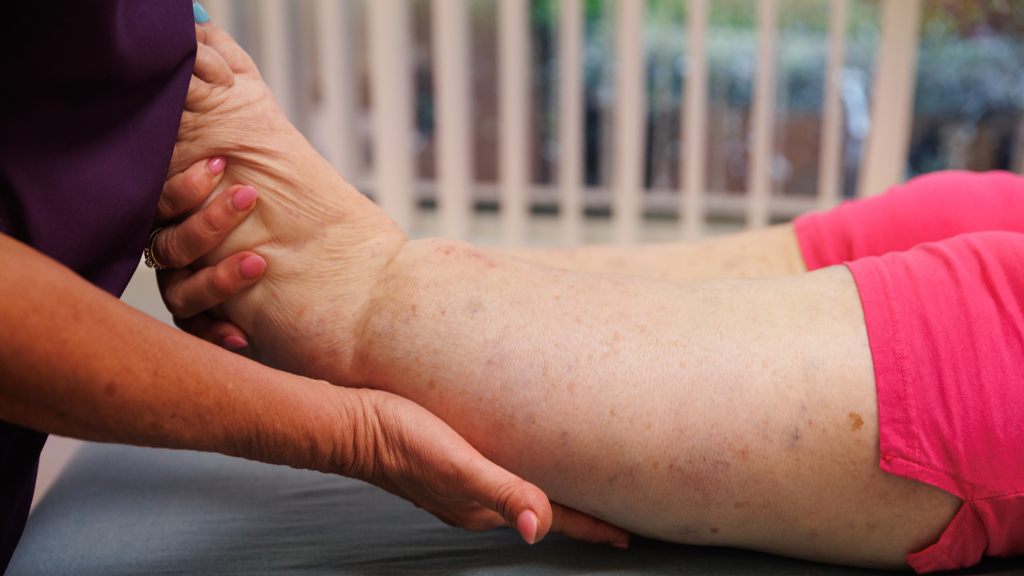This article is a 9-minute read.
There are many treatment options and resources to help throughout your breast cancer journey. Having information about what to expect can help you feel empowered and prepared along the way. One important consideration to be informed about is breast cancer-related lymphedema. This article will provide you with an overview of what you should know, along with some questions you can bring to your doctor.
How Breast Cancer-Related Lymphedema Develops
Lymphedema is a condition in which fluid from the lymphatic system is unable to drain properly and collects within one or more areas of the body, causing noticeable swelling. The lymphatic system is made up of a system of glands and vessels to help transport fluid filled with white blood cells to support immune health. When the nodes or vessels in that system become injured or disconnected, it can disrupt the movement of this fluid, causing it to accumulate in the tissues and lead to swelling.
Breast cancer treatments, such as surgery or radiation, have the potential to cause damage to the lymphatic system. Breast cancer-related lymphedema typically occurs in the arm or chest on the side of your body where the cancer is or was located. This is because these treatments for managing your breast cancer could require the removal of, or cause damage to, lymph nodes and other lymphatic tissues near the tumor. For example, your doctor may recommend radiation therapy in the chest or axillary (armpit) region to treat your tumor. Or, they may suggest removing some lymph nodes during mastectomy or lumpectomy surgery to test for cancer.
Lymphedema can occur at any point after cancer treatment, however most cancer-related lymphedema cases (90%) will emerge within the first year following treatment and 95% of cases present after three years. Proactive conversations with your provider about lymphedema concerns can lead to earlier diagnosis and better management of this condition.
Signs and symptoms of lymphedema can include:
- Swelling in the hand or wrist, such as noticing jewelry or watches are more snug
- Feelings of tightness, heaviness, or fullness in the affected arm or chest area
- Feeling pain or discomfort in the affected arm or chest area
- Noticing redness or taut skin in the affected arm or chest area
If you believe you are noticing signs of lymphedema, it is important to contact your physician sooner rather than later.
What Are My Chances of Developing Lymphedema?
One in five people (21.4%) who undergo breast cancer treatment develop lymphedema. That likelihood can vary depending on the treatment performed, as some interventions impact a greater number of lymph nodes, which increases your risk for lymphedema. Mastectomy and lumpectomy surgeries are well-known intervention approaches used in the treatment of breast cancer. With either of these surgical procedures, it is common for the doctor to recommend the removal of neighboring lymph nodes (sentinel or axillary nodes) or undergoing additional radiation of localized nodes to eliminate additional cancerous tissue. The likelihood of lymphedema may vary depending on the treatment options you pursue as each approach may impact lymph nodes and lymphatic functioning.
Sentinel lymph nodes receive drainage directly from the cancer tumor, while axillary lymph nodes are located further down the lymphatic pathway in the arm and chest. Removal of these nodes is important for testing for additional cancerous cells to prevent cancer from metastasizing, but the removal of each type of node does present an added risk for lymphedema. Sentinel node biopsy usually involves removing one or a few nodes in total. Sources estimate 0-7% of patients who have a sentinel node biopsy may develop lymphedema. In comparison, axillary node dissection may result in several lymph nodes being removed. Approximately 15-25% of patients who have axillary nodes removed may develop lymphedema. Additionally, the use of regional radiation can affect any number of nodes located in the targeted treatment area. An estimated 10-15% of patients who undergo radiation of the regional nodes may develop lymphedema.
While there is no way to predict exactly who will develop breast cancer-related lymphedema, there are some additional risk factors that may increase your chances. Patients who are overweight, experience an infection of the affected area, or have more axillary nodes removed or radiated are at a higher risk. Discussing your specific risk factors with your provider can help you make an informed decision and proactively address lymphedema risks when possible.
Can Lymphedema Be Prevented?
While there is no known cure for lymphedema, certain lifestyle changes such as weight management, protecting your skin from injury and infection, and avoiding extreme heat on the affected areas after breast cancer treatment can help to effectively manage your symptoms or lower your risk of developing it in the first place. However, it is essential to consult with your physician about how and when to safely start these activities after treatment. Knowing your risk factors for, and the signs of, lymphedema is important for maximizing prevention efforts, your lymphedema care, and your quality of life during and after breast cancer.
Learn More About Breast Cancer-Related Lymphedema by Collaborating With Your Provider
Each person who is experiencing breast cancer requires individualized treatment to meet their unique needs. Asking your doctor the right questions can help you select and prepare for treatment options to best support your health and quality of life. Here are some questions you might consider asking your doctor to better understand your specific risks and needs:
- What is my risk of lymphedema after my breast cancer treatment (considering overall health, family history, type of surgery, and other factors)?
- What types of breast cancer treatment might increase the likelihood of lymphedema for me?
- How can I minimize the risk of lymphedema after breast cancer treatment?
- What are the signs I should watch out for?
- Are there activities, foods, or other lifestyle habits I should or should not do?
- Do you recommend any particular exercises?
- How would I get diagnosed?
- If I were to develop lymphedema, what would my management plan look like?
Though you may still have questions, and there may still be uncertainties, it is important to note that there is hope and help available to navigate breast cancer-related lymphedema. One such resource for managing the condition is our Lympha Press Optimal Plus™ pump with the ComfySleeve™ pneumatic compression therapy garment. The ComfySleeve™ half jacket is specifically designed for effectiveness and ease of use and is clinically proven to support management of breast cancer-related lymphedema symptoms. Learn more about pneumatic compression and breast cancer-related lymphedema.
Hopefully this article and checklist offers a great place to start a conversation with your provider about breast cancer-related lymphedema. And we hope this information helps to reduce some of the uncertainty surrounding breast cancer-related lymphedema and inform your treatment decisions. To learn more, we invite you to explore our other blogs and resources.






